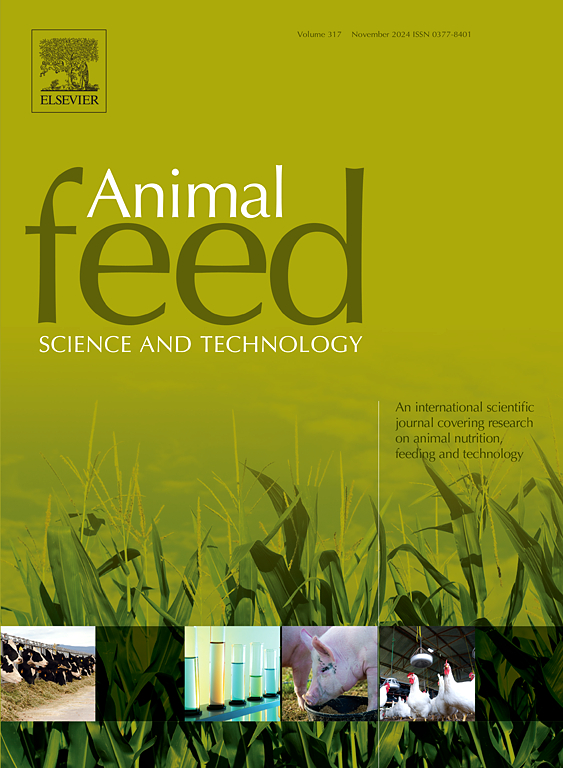Quantifying the interactions between dietary fibers and macronutrient digestibility in broiler chickens: The importance of considering fiber solubility
IF 2.5
2区 农林科学
Q1 AGRICULTURE, DAIRY & ANIMAL SCIENCE
引用次数: 0
Abstract
Dietary fibers (DF) have been conventionally considered to limit nutrient utilization in broiler diets. However, the increasing attention towards the use of high-fiber by-products as feed ingredients to reduce costs and environmental impacts requires a better understanding of the role of fibers in the digestion of broiler chickens. Dietary fibers entail a highly heterogeneous group of polymers that differently affect nutrient digestibility. The aim of this study was to collect and analyze the data from published literature related to the inclusion of fibers into standard broiler diets and subsequent effects on digestion. A literature search was performed to find experimental studies that tested the effects of adding high-fiber ingredients on ileal and total tract digestibility of dry matter (DM), crude protein (CP), fat, and starch. A total of 45 studies and 198 experimental treatments were considered for the statistical analyses. For each diet, total DF (TDF), insoluble DF (IDF), and soluble DF (SDF) were calculated based on tabular data of each ingredient. The analysis unit was the effect size of digestibility expressed as the difference between control and treatment diets (% unit). For every digestibility variable, two multiple curvilinear regression models were fitted. Model 1 included the addition of TDF in the experimental diet in relation to the basal diet as a covariate, whereas model 2 included the addition of IDF and SDF as separate covariates. Model 2 better explained the variability in digestibility effect sizes for all nutrients, indicating that the consideration of DF solubility is required to better understand the effects of DF on nutrient digestibility. The inclusion of IDF showed improvements of up to 10 % units in the digestibility of DM, CP, fat, and starch at additional inclusion levels of up to 50 g/kg DM, beyond which the effects became negative. In contrast, the inclusion of SDF showed negative consequences for nutrient digestibility already beyond 20 g/kg DM. In conclusion, DF can affect digestibility of other nutrients in a positive or negative way, depending on DF characteristics and inclusion level. Solubility of DF was found to explain a large part of the variability in digestibility effects and therefore, we recommend to consider DF solubility in feed formulation. Furthermore, the additional inclusion of up to 50 g/kg DM of IDF to a standard cereal-soybean-based diet can be advised for improving the nutrient digestibility in broiler chickens, whereas the inclusion of SDF should be minimized and not exceed approximately 20 g/kg DM.
求助全文
约1分钟内获得全文
求助全文
来源期刊

Animal Feed Science and Technology
农林科学-奶制品与动物科学
CiteScore
6.00
自引率
6.20%
发文量
266
审稿时长
3 months
期刊介绍:
Animal Feed Science and Technology is a unique journal publishing scientific papers of international interest focusing on animal feeds and their feeding.
Papers describing research on feed for ruminants and non-ruminants, including poultry, horses, companion animals and aquatic animals, are welcome.
The journal covers the following areas:
Nutritive value of feeds (e.g., assessment, improvement)
Methods of conserving and processing feeds that affect their nutritional value
Agronomic and climatic factors influencing the nutritive value of feeds
Utilization of feeds and the improvement of such
Metabolic, production, reproduction and health responses, as well as potential environmental impacts, of diet inputs and feed technologies (e.g., feeds, feed additives, feed components, mycotoxins)
Mathematical models relating directly to animal-feed interactions
Analytical and experimental methods for feed evaluation
Environmental impacts of feed technologies in animal production.
 求助内容:
求助内容: 应助结果提醒方式:
应助结果提醒方式:


